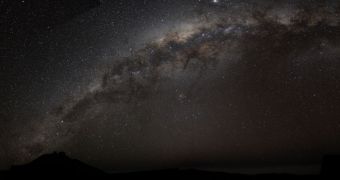In a study published only recently, a researcher indicates that space contamination flows from the Earth to the surrounding environment, and not the other way around. The work draws an interesting parallel to the case of the Apollo 11 crew.
The astronauts were locked up in quarantine for no less than three weeks after they landed in the Pacific Ocean. Biologists feared that they may have contracted some weird space disease, and wanted to protect the planet from its effects.
But this is now the way contamination works, explains Charles S. Cockell, who is a professor of geomicrobiology at the Open University. He formerly held an appointment as a microbiologist for the British Antarctic Survey (BAS).
The issue of space contamination has made its way into the public consciousness for only a short period of time. Most often, engineers building spacecraft have to follow some very specific safety protocols to ensure that their satellites, landers, orbiters, rovers or telescope do not carry contaminants.
Several studies demonstrated over the last decade or so that microorganisms can endure in extreme conditions, including the void and low temperature of outer space, and the close proximity of molten lava and hydrothermal vents at the bottom of the ocean.
If such extremophiles (organisms living in extreme environments) were to make their way to other planets or moons, and come across an ecosystem, then they would become the strongest lifeform.
It stands to reason that a microbe or bacteria capable of enduring years of space travel, massive amounts of radiation and other such adverse factors would have no trouble accommodating to a new type of environment within just a few generations.
But other astrobiologists do not agree with this approach. They say that we should look for alien life wherever we can find it. However, if we don't see any signs, then we might send bacteria and other microorganisms to these worlds, to seed life there artificially.
On some exoplanets, for example, the basic elements for life may exist. They could however lack the initial spark to trigger the evolution of life. By using Earth's organisms, experts could trigger these reactions, leading to the development of new lifeforms, Daily Galaxy reports.

 14 DAY TRIAL //
14 DAY TRIAL //